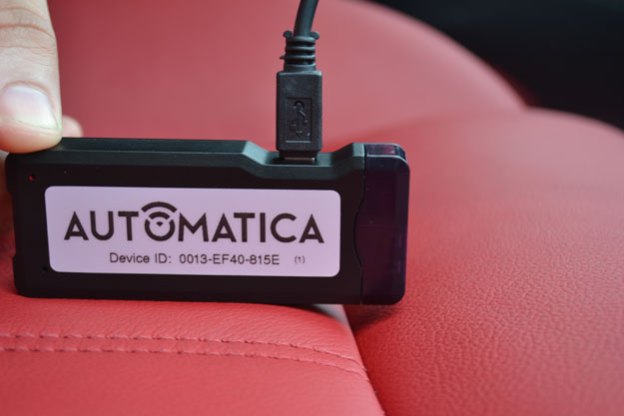
These days, there are lots of ways drivers get their music fix.
In addition to the (now) archaic CD player, many look to iPods and smartphones for their musical merriment while behind the wheel. Depending on the type of car you own, however, this can prove difficult – especially when you throw Bluetooth streaming into the mix, which can either be buggy or not supported by your vehicle at all.
Now, an Italian company called INRETE aims to change all that with the Automatica ($100).
Automatica is a relatively small USB dongle that plugs into your car’s USB drive.
It lets you download and listen to all of your music files (including podcasts) from the cloud through your vehicle’s sound system. It can store up to 24 hours of audio, which you can expand with a micro SD slot located on the side of the device, and works with any car that has a USB port.

There are no buttons on the unit to fiddle with, and controlling the device is done entirely through your vehicle’s native controls.
We recently had a chance to try out Automatica for ourselves and while we found it to be remarkably easy to operate, were ultimately troubled by some lingering questions regarding its value and usefulness.
A brief setup process required that we plug the device into our computer (Automatica will work on both Mac and PC), set up a Wi-Fi connection, and create an account on Automatica’s website. Once that was complete, we were able to start adding audio files to the device.
Autopilot audio
In addition to manually placing music onto the device, with an active Wi-Fi connection, Automatica automatically (see what they did there?) syncs up with a number of cloud storage services such as Dropbox, Google Drive, and Microsoft’s SkyDrive. Multiple connections can be made depending on your location (school, home, office) for automatic syncing.
Users can even tether Automatica to their smartphones so it’s always connected and updating. The tethering process requires your phone be plugged into your computer when setting it up for the first time.
In theory, while driving and with Automatica tethered to your phone, someone sharing your cloud services and with access to your Automatica log in could add tracks and podcasts while you’re on the go.

Once set up, you never have to plug it into a computer again, which despite how lazy this makes us sound, is sort of a hassle when going through the multi-step process of putting new music onto an iPod or your MP3 player of choice.
Because we set up multiple Wi-Fi connections for the device, we never had to plug into a computer when updating audio files at the office or at home. We used DropBox for the majority of our tests, which worked without any issues.
The automatic choice?
But is Automatica as functional and necessary as it needs to be? As we mentioned earlier, there are already a number of ways one can listen to music in a car. And truthfully we don’t see how Automatica is substantially more useful than some of the more obvious ones.
Sure, streaming music from your phone or through apps may eat away at your precious your data plan, not to mention your battery (although you can probably plug it into your cars USB to charge). And not every car can stream through Bluetooth. Some cars allow you to cable your phone to the vehicle and stream while others require your phone to not be cabled.

Of course, streaming options aren’t available in every car, but if you have a relatively new vehicle, chances are you’ll have a USB connection and will be able to use an iPod, thumbdrive, or even an SD card to play music. There is also a question of value that must be asked, because at $100 this doesn’t feel like a must-have device; in fact it isn’t doing anything that your smartphone or iPod can’t do one way or another.
And if you are indeed a smartphone user — and we’re willing to bet you are – you’ll likely take umbrage with Automatica occupying that precious USB slot in your car, preventing you from using it and charging your phone at the same time.
Conclusion
Automatica is great if you really want to a device that will pull your music from the cloud without involving a computer, but unless you’re so busy (or lazy, like us) that you don’t have the time to plug in your iPod or phone to freshen up your music library, then there really isn’t a compelling reason to part with your hard-earned money.
While streaming via Bluetooth isn’t available in every car, we still find it to be the most versatile solution, while a good ol’ iPod will do the trick in most situations,too.
Automatica is certainly a novel idea, but most just won’t find reason enough to drop $100 on one – and neither can we.


